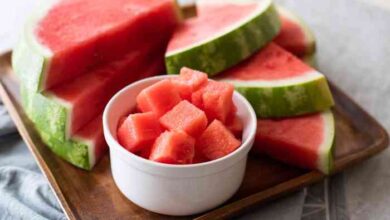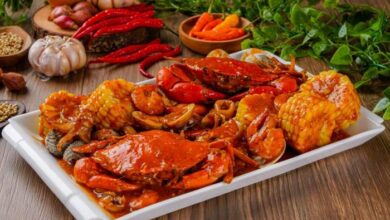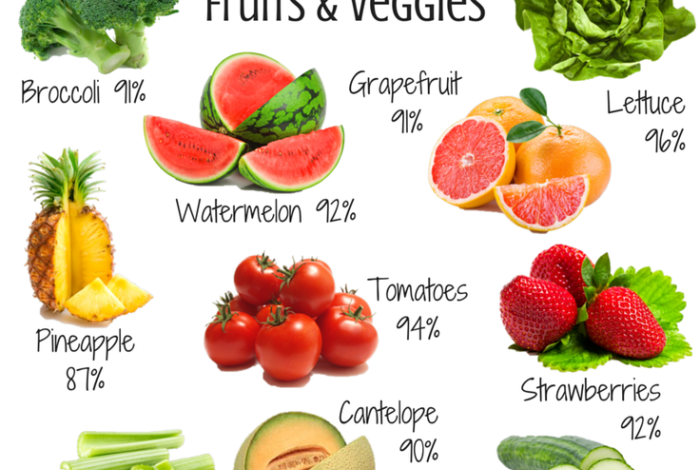
Freeze-Dried or Dehydrated Foods: A Guide to Preservation
Freeze dried or dehydrated foods – Freeze-dried or dehydrated foods have become increasingly popular in recent years, offering a convenient and long-lasting way to preserve food. From backpacking meals to emergency supplies, these methods offer a unique way to enjoy your favorite foods, even when fresh ingredients are scarce.
But what exactly are these processes, and how do they compare? Let’s dive into the fascinating world of freeze-drying and dehydration.
Both methods work by removing moisture from food, preventing spoilage and extending shelf life. Freeze-drying involves freezing the food and then subjecting it to a vacuum to remove water through sublimation, while dehydration utilizes heat to evaporate moisture. The result?
Lightweight, compact food that can be stored for extended periods without refrigeration. But while the benefits are clear, there are also considerations regarding taste, texture, and nutritional value. We’ll explore these aspects, along with the diverse applications and potential downsides of freeze-dried and dehydrated foods.
Introduction to Freeze-Dried and Dehydrated Foods
Freeze-dried and dehydrated foods are essential components of our modern food system, offering convenient, long-lasting, and nutritious options for various purposes. Both methods involve removing water from food to inhibit microbial growth and prevent spoilage, but they employ different techniques and result in varying textures and qualities.
The Process of Freeze-Drying and Dehydration
Freeze-drying and dehydration are distinct methods of preserving food by removing moisture, but they differ in their approach and outcomes. Freeze-drying, also known as lyophilization, involves freezing food and then subjecting it to a vacuum. The ice in the food sublimates directly from solid to gas, leaving behind a porous, lightweight product.
This process preserves the food’s original shape, texture, and nutrients, making it ideal for delicate foods like fruits, vegetables, and even pharmaceuticals. Dehydration, on the other hand, involves drying food at a higher temperature, typically in an oven or food dehydrator.
The moisture evaporates, leaving a denser, more concentrated product. Dehydration is suitable for preserving a wide range of foods, including fruits, vegetables, meats, and herbs.
History and Origins of Freeze-Drying and Dehydration
The preservation of food through drying has been practiced for centuries. Ancient civilizations like the Egyptians, Incas, and Native Americans used sun-drying and other techniques to preserve food for extended periods. The concept of freeze-drying emerged in the early 20th century, with its origins tracing back to the development of vacuum technology.
During World War II, freeze-drying became crucial for preserving blood plasma and other medical supplies for the military. Dehydration, a more traditional method, has been practiced since ancient times. Sun-drying, wind-drying, and smoking were commonly used techniques for preserving fruits, vegetables, and meats.
Examples of Traditional and Modern Uses of Freeze-Dried and Dehydrated Foods
Freeze-dried and dehydrated foods have found widespread applications in various sectors, from traditional practices to modern food technology.
- Traditional Uses:
- Sun-dried fruits and vegetableshave been a staple in many cultures, providing a source of nutrients and sweetness during periods of scarcity.
- Jerky and smoked meatswere essential for preserving meat and extending its shelf life, particularly for nomadic communities and hunters.
- Modern Uses:
- Outdoor recreation and camping:Freeze-dried meals are lightweight and convenient for backpacking, hiking, and camping, providing nutritious meals without the need for refrigeration.
- Emergency preparedness:Both freeze-dried and dehydrated foods have a long shelf life and are essential components of emergency food kits for natural disasters or other emergencies.
- Space exploration:Freeze-dried foods have been a staple in space missions, providing astronauts with lightweight and nutritious meals in the harsh environment of space.
- Food processing and manufacturing:Freeze-drying and dehydration are widely used in the food industry for producing instant coffee, powdered milk, and other processed foods.
Advantages and Disadvantages
Freeze-drying and dehydration are two popular methods for preserving food, offering a way to extend shelf life and make food more portable. While both processes aim to remove moisture from food, they employ different techniques, leading to distinct advantages and disadvantages.
Understanding these differences can help you decide which method best suits your needs.
Freeze-dried and dehydrated foods are great for prepping for emergencies or backpacking trips, but it’s important to remember that they’re often high in sodium and may lack essential nutrients. That’s where a health coach can be a game-changer! 3 reasons you need a health coach can help you create a balanced diet that incorporates these foods while ensuring you’re getting the nutrients you need.
They can also guide you on how to best prepare these foods for optimal flavor and texture.
Impact on Food Quality, Taste, and Nutritional Value
The impact of freeze-drying and dehydration on food quality, taste, and nutritional value is a crucial consideration. Freeze-drying generally preserves more of the original flavor and texture of the food compared to dehydration. This is because the freezing process helps to maintain the structure of the food cells, preventing significant changes in texture and taste.
Dehydration, on the other hand, can sometimes result in a slightly tougher or more rubbery texture, as the heating process can alter the structure of the food. Regarding nutritional value, both methods can preserve a significant amount of nutrients. However, some vitamins and minerals, particularly those sensitive to heat, may be lost during the dehydration process.
Freeze-drying, due to its lower temperatures, tends to preserve more nutrients, especially water-soluble vitamins.
Shelf Life and Storage Requirements
Freeze-dried and dehydrated foods offer extended shelf life compared to fresh produce, making them ideal for long-term storage. The removal of moisture significantly inhibits the growth of bacteria and mold, extending the time food can be safely stored.Freeze-dried foods typically have a shelf life of 25 years or more when stored properly in airtight containers in a cool, dry place.
This extended shelf life makes freeze-dried foods ideal for emergency preparedness and long-term storage. Dehydrated foods generally have a shorter shelf life, ranging from 6 months to a year, depending on the type of food and storage conditions.
Freeze-dried and dehydrated foods are lifesavers for camping trips, but they can also add a fun twist to holiday baking. Imagine the excitement of adding a sprinkle of freeze-dried cranberries to your Christmas cookies or whipping up a batch of dehydrated apple chips for Santa’s snack.
Speaking of Santa, how to make christmas even more magical with a new tradition get texts from santa might just be the extra magic your family needs this year! Back to the food, don’t forget to stock up on freeze-dried marshmallows for those holiday hot chocolates, too!
Proper storage is crucial for maintaining the quality and shelf life of both freeze-dried and dehydrated foods.
Freeze-dried and dehydrated foods are a lifesaver for camping trips, emergency preparedness, or just a quick and easy meal. They’re also a surprisingly thoughtful gift, especially for those who love the outdoors or enjoy a little adventure. If you’re looking for inspiration, check out 14 gift ideas for everyone on your list for some creative ideas.
You can even put together a custom gift basket filled with delicious freeze-dried treats, perfect for a friend or family member who appreciates the convenience and long shelf life of these unique food options.
Comparison of Freeze-Drying and Dehydration
| Feature | Freeze-Drying | Dehydration |
|---|---|---|
| Process | Freezing followed by vacuum drying | Heating food to evaporate moisture |
| Temperature | Low temperatures (-40°C to
|
Higher temperatures (50°C to 70°C) |
| Food Quality | Preserves flavor, texture, and nutrients | Can alter texture and reduce some nutrients |
| Shelf Life | 25 years or more | 6 months to 1 year |
| Storage Requirements | Airtight containers, cool, dry place | Airtight containers, cool, dry place |
| Cost | More expensive | Less expensive |
Types of Freeze-Dried and Dehydrated Foods: Freeze Dried Or Dehydrated Foods
The world of freeze-dried and dehydrated foods is vast and diverse, encompassing a wide range of options from fruits and vegetables to meats and even complete meals.
Understanding the different types of foods available and their specific characteristics is crucial for making informed choices based on your needs and preferences.
Fruits and Vegetables
Freeze-dried and dehydrated fruits and vegetables offer a convenient and long-lasting way to enjoy the nutritional benefits of fresh produce.
- Freeze-dried fruitsare typically lighter and crispier than their dehydrated counterparts, retaining more of their original texture and flavor. They are commonly used as snacks, toppings for yogurt or cereal, or ingredients in baking. Examples include strawberries, blueberries, raspberries, mangoes, and bananas.
Popular brands include “Nature’s Own” and “Mountain House.”
- Dehydrated fruitsare generally more affordable and have a longer shelf life than freeze-dried fruits. They are often used in trail mixes, fruit leathers, or as a base for homemade fruit snacks. Examples include apples, apricots, cranberries, dates, and figs. Popular brands include “Sun-Maid” and “Annie’s Homegrown.”
- Freeze-dried vegetablesretain their vibrant color and nutritional value, making them an excellent addition to soups, stews, and other dishes. They are also a convenient option for camping and backpacking. Examples include carrots, broccoli, spinach, peas, and bell peppers. Popular brands include “Backpacker Pantry” and “ReadyWise.”
- Dehydrated vegetablesare typically used in soups, stews, and other dishes where texture is less important. They are often more affordable than freeze-dried vegetables. Examples include onions, garlic, mushrooms, and potatoes. Popular brands include “Bob’s Red Mill” and “Frontier Co-op.”
Meats
Freeze-dried and dehydrated meats are popular options for outdoor enthusiasts and those seeking a long-lasting protein source.
- Freeze-dried meatsare lightweight and compact, making them ideal for backpacking and camping. They retain their flavor and texture, offering a satisfying and nutritious meal option. Examples include beef, chicken, turkey, and pork. Popular brands include “Mountain House” and “Wise Company.”
- Dehydrated meatsare typically used in jerky, sausage, and other cured meat products. They are often seasoned and flavored to enhance their taste and appeal. Examples include beef jerky, turkey jerky, and salmon jerky. Popular brands include “Jack Link’s” and “Epic Bars.”
Other Ingredients
Beyond fruits, vegetables, and meats, a wide range of other ingredients can be found in freeze-dried and dehydrated form.
- Freeze-dried herbs and spicesretain their aroma and flavor, adding depth and complexity to dishes. They are commonly used in soups, stews, sauces, and rubs. Examples include basil, oregano, thyme, rosemary, and garlic powder. Popular brands include “McCormick” and “Spice Islands.”
- Dehydrated grains, such as rice, quinoa, and couscous, are a staple in many kitchens, offering a convenient and long-lasting source of carbohydrates. They are often used in soups, stews, salads, and side dishes. Popular brands include “Lundberg” and “Bob’s Red Mill.”
- Dehydrated beansare a versatile ingredient that can be used in soups, stews, salads, and dips. They are a good source of protein and fiber. Examples include black beans, kidney beans, and pinto beans. Popular brands include “Bush’s Best” and “Eden Organic.”
- Freeze-dried milkis a convenient option for camping, backpacking, and emergencies. It is lightweight and compact, offering a quick and easy way to add calcium and protein to your diet. Popular brands include “Carnation” and “Nestle.”
Complete Meals
Freeze-dried and dehydrated meals offer a convenient and nutritious option for those on the go or seeking a quick and easy meal solution.
- Freeze-dried mealsare typically packaged in pouches or cans and contain all the ingredients necessary for a complete meal. They are often designed for backpacking, camping, or emergency preparedness. Examples include pasta dishes, rice bowls, and chili. Popular brands include “Mountain House” and “ReadyWise.”
- Dehydrated mealsare often sold in pouches or jars and require the addition of water to rehydrate. They are typically more affordable than freeze-dried meals and offer a wider variety of flavors and cuisines. Examples include soups, stews, and pasta dishes. Popular brands include “Backpacker Pantry” and “Augason Farms.”
Applications and Uses
Freeze-dried and dehydrated foods offer a wide range of applications across various sectors, from outdoor adventures to emergency preparedness and even space exploration. These foods are designed for convenience, portability, and long shelf life, making them ideal for situations where fresh food is not readily available.
Outdoor Recreation
Freeze-dried and dehydrated foods are popular choices for campers, hikers, and backpackers. Their lightweight and compact nature makes them easy to carry, while their long shelf life ensures that they can be stored for extended periods. These foods are often used in pre-packaged meals that require minimal preparation, such as boiling water.
Examples include:
- Backpacking meals: These meals typically include freeze-dried ingredients like pasta, rice, or noodles, combined with dehydrated vegetables and sauces. They are designed to provide a complete and balanced meal in a single serving.
- Instant soups: Dehydrated soups, often in single-serving packets, are a quick and convenient way to get a warm meal on the trail. They typically contain dehydrated vegetables, noodles, and broth.
- Snacks: Freeze-dried fruits and vegetables, such as strawberries, blueberries, and mushrooms, offer a healthy and convenient snack option for outdoor enthusiasts.
Emergency Preparedness
Freeze-dried and dehydrated foods are essential components of emergency preparedness kits. Their long shelf life and minimal storage requirements make them ideal for situations where access to fresh food is limited or unavailable. Examples include:
- Emergency rations: These rations are designed to provide essential nutrients and calories for survival in emergency situations. They typically include a variety of freeze-dried or dehydrated foods, such as grains, fruits, vegetables, and protein sources.
- Shelter-in-place kits: These kits contain a variety of supplies, including freeze-dried and dehydrated foods, to help individuals survive for an extended period in the event of a natural disaster or other emergency.
Space Exploration
Freeze-dried and dehydrated foods play a crucial role in space exploration. They are lightweight, compact, and can be stored for long durations, making them ideal for long-duration missions. Examples include:
- Astronaut meals: Freeze-dried and dehydrated foods are used to create meals for astronauts, ensuring they receive the necessary nutrients and calories in space. These meals often come in pre-packaged pouches and require the addition of hot water for rehydration.
Culinary Applications
Beyond their practical uses, freeze-dried and dehydrated foods also offer a range of culinary applications. Their unique texture and flavor profiles can be incorporated into various dishes, adding a unique twist to traditional recipes. Examples include:
- Desserts: Freeze-dried fruits can be used to create innovative desserts, such as fruit crumbles, cakes, and ice cream toppings. Their concentrated flavor and crispy texture provide a delightful contrast to the other ingredients.
- Soups and stews: Dehydrated vegetables can be used to add flavor and texture to soups and stews. They can be rehydrated in broth or water, and their long shelf life makes them a convenient ingredient for meal preparation.
- Granola and trail mix: Freeze-dried fruits and vegetables can be added to granola and trail mix, providing a boost of flavor and nutrients.
Health Considerations
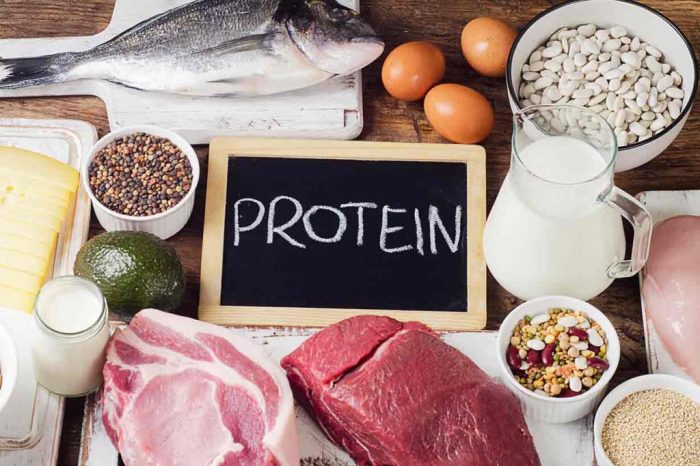
Freeze-dried and dehydrated foods offer a convenient and long-lasting option for preserving food, but it’s essential to consider their nutritional value and potential health impacts. Understanding the advantages and disadvantages of these methods can help you make informed choices about incorporating them into your diet.
Nutritional Value and Potential Health Benefits
Freeze-drying and dehydration are methods that preserve food by removing moisture, which inhibits the growth of bacteria and mold. This process can retain a significant portion of the original food’s nutrients, making it a valuable option for preserving essential vitamins and minerals.
- Vitamin Retention:Freeze-drying, in particular, has been shown to preserve water-soluble vitamins like vitamin C and B vitamins more effectively than other methods, such as canning or freezing. This is because the process avoids the high temperatures that can degrade these vitamins.
- Mineral Content:Both freeze-drying and dehydration generally retain a significant amount of minerals, such as potassium, magnesium, and calcium, which are essential for maintaining overall health.
- Antioxidant Properties:Some studies suggest that freeze-dried fruits and vegetables may have higher levels of antioxidants compared to their fresh counterparts. Antioxidants help protect cells from damage caused by free radicals.
- Convenience and Portability:Freeze-dried and dehydrated foods are lightweight and compact, making them ideal for camping, hiking, and emergency preparedness. They also have a longer shelf life than fresh foods, which can be beneficial for those who need to store food for extended periods.
Potential Risks and Drawbacks
While freeze-dried and dehydrated foods offer nutritional benefits, it’s important to be aware of potential risks and drawbacks:
- Nutrient Loss:While some nutrients are preserved, some vitamins and minerals can be lost during the drying process, especially with prolonged storage. This is particularly true for fat-soluble vitamins like vitamin A, D, E, and K.
- Increased Sodium Content:Dehydrated foods often have added salt to enhance flavor and extend shelf life. Consuming large quantities of these foods can contribute to a high sodium intake, which can increase blood pressure and contribute to other health issues.
- Fiber Reduction:Dehydration can reduce the fiber content of some foods, which can affect digestion and regularity.
- Potential Allergens:Be aware of potential allergens in freeze-dried and dehydrated foods, as they may contain ingredients like milk, eggs, nuts, or soy.
Recommendations for Incorporating Freeze-Dried and Dehydrated Foods into a Healthy Diet
- Choose a Variety of Foods:Don’t rely solely on freeze-dried and dehydrated foods. Include fresh fruits and vegetables, whole grains, lean protein sources, and healthy fats in your diet for a balanced nutritional intake.
- Read Labels Carefully:Pay attention to the ingredient list and nutritional information on packaging. Look for options with lower sodium content and added sugars.
- Consider Homemade Alternatives:If you’re concerned about nutrient loss or added ingredients, consider making your own freeze-dried or dehydrated foods at home. This allows you to control the ingredients and drying process.
- Moderate Consumption:While freeze-dried and dehydrated foods can be a valuable addition to a healthy diet, it’s important to consume them in moderation. Don’t rely on them as your primary source of nutrients.
Environmental Impact
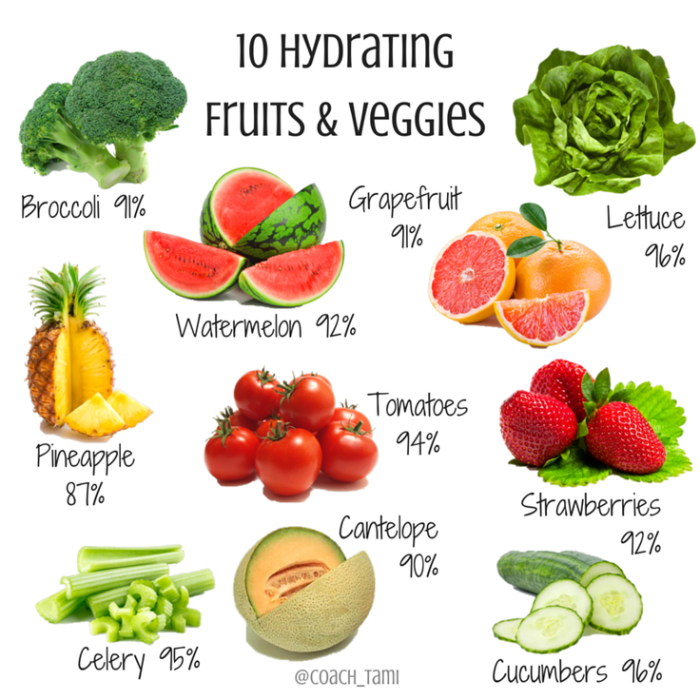
The environmental impact of freeze-drying and dehydration processes is a critical consideration, especially in the context of growing concerns about sustainability and resource depletion. While these methods offer significant advantages in food preservation, their energy consumption and waste generation can have both direct and indirect environmental consequences.
This section explores the environmental impact of these processes, comparing their sustainability with other food preservation techniques and identifying potential solutions for minimizing their footprint.
Energy Consumption
The energy consumption of freeze-drying and dehydration processes is a significant factor in their environmental impact. Freeze-drying, in particular, requires a substantial amount of energy for both freezing and sublimation. This energy is typically derived from fossil fuels, contributing to greenhouse gas emissions.
Dehydration, while less energy-intensive than freeze-drying, still requires energy for heating and drying. The energy consumption of these processes varies depending on factors such as the type of food being processed, the size of the production facility, and the efficiency of the equipment used.
However, it is generally recognized that freeze-drying has a higher energy footprint than dehydration.
A study by the University of California, Davis, found that the energy consumption of freeze-drying was approximately three times higher than that of dehydration.
Waste Generation
The waste generated by freeze-drying and dehydration processes primarily consists of packaging materials and water vapor. The amount of packaging waste generated depends on the type of packaging used, which can range from plastic bags to metal cans. Water vapor, a byproduct of both processes, is typically released into the atmosphere.
While water vapor itself is not a pollutant, its release can contribute to the greenhouse effect.
Comparison with Other Food Preservation Techniques
Compared to other food preservation techniques, such as canning, freezing, and pickling, freeze-drying and dehydration have both advantages and disadvantages in terms of their environmental impact.
- Canning: This method involves heating food in sealed containers, which requires a significant amount of energy. However, canning often uses glass jars, which are recyclable.
- Freezing: This method involves rapidly cooling food to below freezing temperatures, which requires energy but is generally considered more energy-efficient than freeze-drying. However, freezing can lead to nutrient loss and changes in texture.
- Pickling: This method involves preserving food in a brine solution, which typically uses vinegar and salt. While pickling is generally energy-efficient, it can contribute to salt pollution if not managed properly.
Solutions for Minimizing Environmental Footprint
Several strategies can be implemented to minimize the environmental footprint of freeze-drying and dehydration processes:
- Energy Efficiency Improvements: Implementing energy-efficient equipment and processes, such as using heat recovery systems and optimizing drying times, can significantly reduce energy consumption.
- Renewable Energy Sources: Utilizing renewable energy sources, such as solar or wind power, for production facilities can reduce greenhouse gas emissions.
- Sustainable Packaging: Utilizing sustainable packaging materials, such as biodegradable or compostable options, can reduce packaging waste.
- Water Conservation: Implementing water conservation measures, such as using recycled water for cleaning and reducing water usage during processing, can reduce water consumption.
Future Trends
The world of freeze-drying and dehydration is constantly evolving, driven by advancements in technology and a growing demand for convenient, nutritious, and sustainable food solutions. These innovations are reshaping the way we produce, consume, and think about food.
Emerging Technologies
Advancements in freeze-drying and dehydration technologies are pushing the boundaries of what’s possible.
- Pulse-Vacuum Freeze-Drying: This innovative technique involves rapidly freezing food and then applying short bursts of vacuum pressure. This process helps to shorten drying times and preserve the quality of delicate foods like fruits and vegetables.
- Microwave Dehydration: This method utilizes microwaves to heat and dehydrate food, significantly reducing drying time compared to traditional methods.
Microwave dehydration offers potential for energy efficiency and improved preservation of nutrients.
- Supercritical Fluid Extraction: This technology uses supercritical fluids like carbon dioxide to extract water from food, resulting in a highly efficient and environmentally friendly dehydration process. This technique can be particularly beneficial for preserving the flavors and aromas of delicate foods.
Applications in Food Production and Consumption, Freeze dried or dehydrated foods
These emerging technologies are paving the way for new and innovative applications of freeze-drying and dehydration in the food industry.
- Personalized Nutrition: Freeze-drying and dehydration are increasingly used to create personalized food products tailored to specific dietary needs, such as low-sodium, gluten-free, or allergen-free options.
- Food Waste Reduction: These methods can extend the shelf life of perishable foods, reducing food waste and promoting sustainable food practices.
- Space Exploration: Freeze-dried and dehydrated foods are essential components of astronaut diets, providing long-lasting and nutrient-rich meals for space missions.
- Disaster Relief: These methods are crucial for producing shelf-stable, nutrient-dense foods that can be easily transported and stored for emergency situations.
Impact on the Food Industry and Consumers
The advancements in freeze-drying and dehydration are poised to transform the food industry and consumer preferences.
- Increased Convenience: These methods provide consumers with convenient and easy-to-prepare food options, catering to busy lifestyles and on-the-go needs.
- Enhanced Food Safety: Freeze-drying and dehydration effectively eliminate microorganisms and pathogens, contributing to food safety and extending shelf life.
- Sustainable Food Systems: These methods promote sustainable food practices by reducing food waste, minimizing energy consumption, and decreasing the environmental impact of food production.

